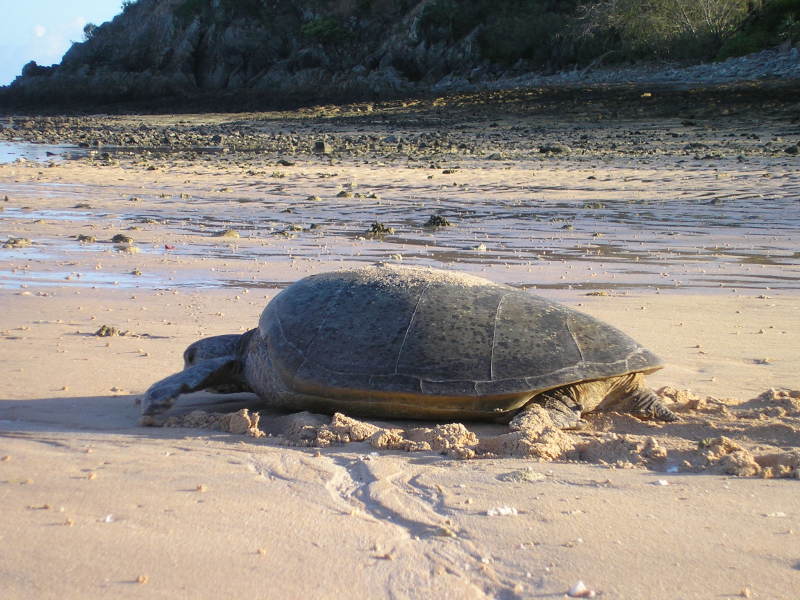Colours
Distinguishing features
The carapace is low-domed, the edge is upturned, and it has four pairs of costal scales, fewer than other marine turtles. The upper parts are an olive-grey, and more pale ventrally. A single pair of scales is located at the front of the head, which also distinguish this species from others. (Wikipedia)
Size
- Up to 90 cm (Carapace Length)
Synonyms
Distribution
Distribution and habitat preferences
They are endemic to the continental shelf of Australia.
Flatback turtles are usually found in bays, shallow, grassy waters, coral reefs, estuaries, and lagoons on the northern coast of Australia and off the coast of Papua New Guinea.
The species may feed off Indonesia and Papua New Guinea, but it nests only in Australia. Nesting occurs across the northern half of Australia, from Exmouth in Western Australia to Mon Repos Conservation Park in Queensland. The most significant breeding site is Crab Island in the western Torres Strait. Breeding may also occur on the islands of the southern Great Barrier Reef, and on mainland beaches and offshore islands north of Gladstone. (Wikipedia)


